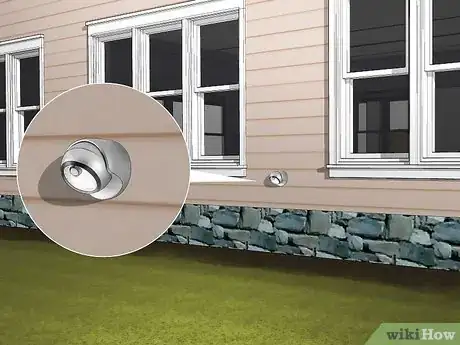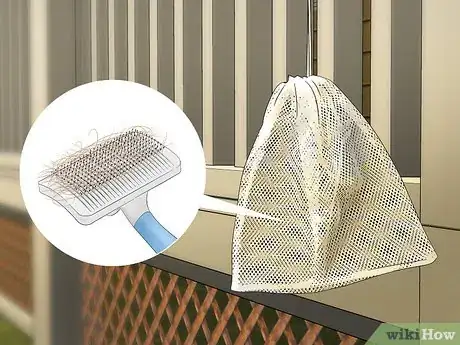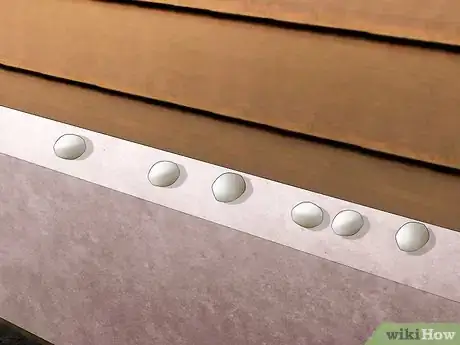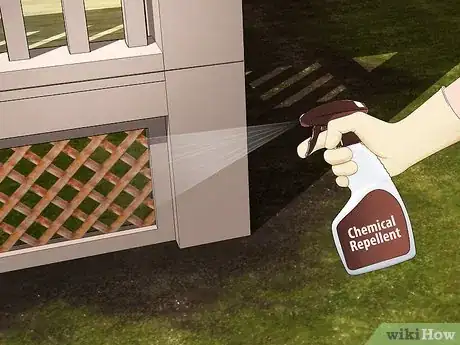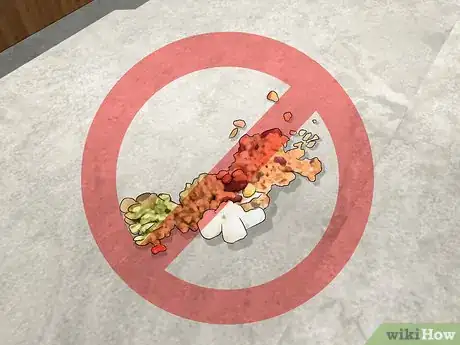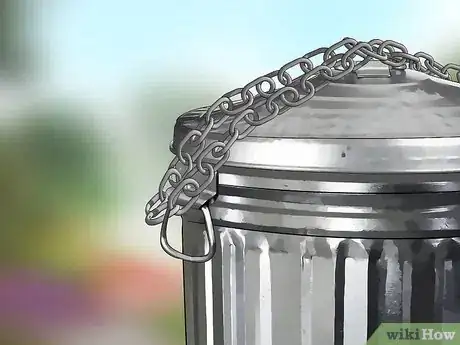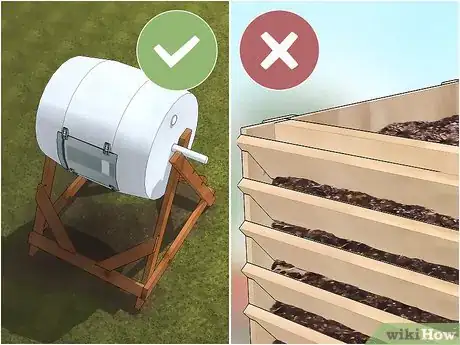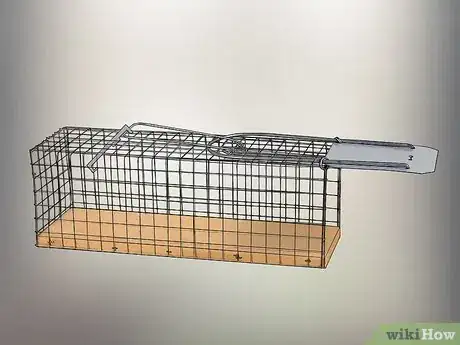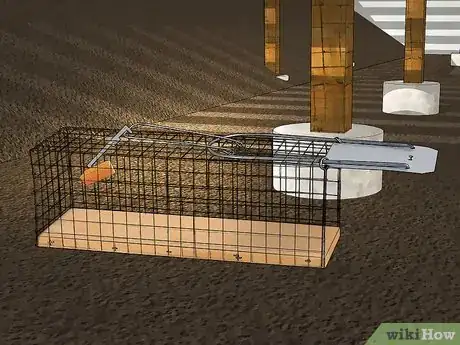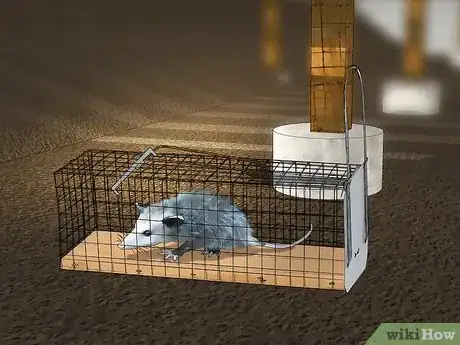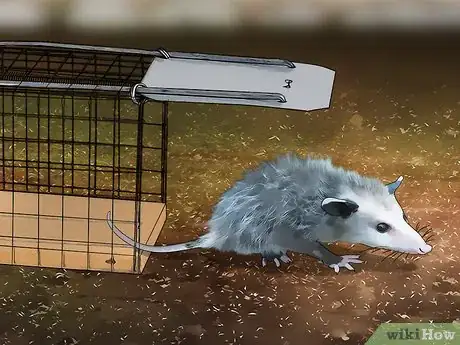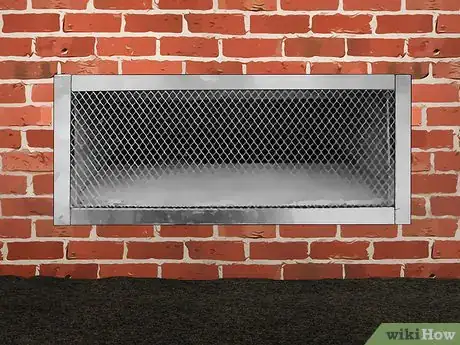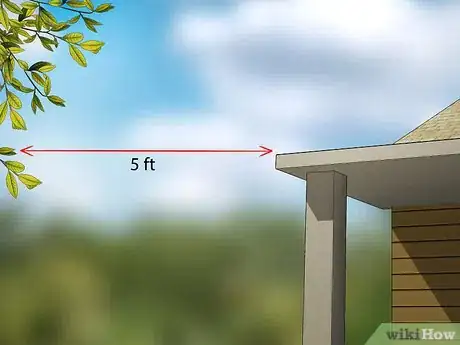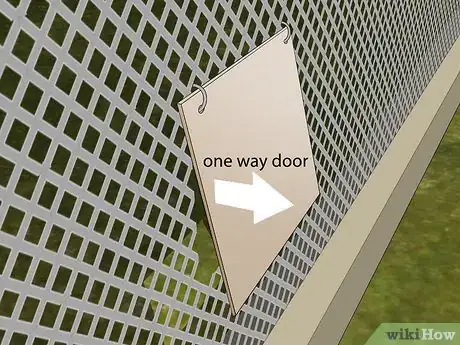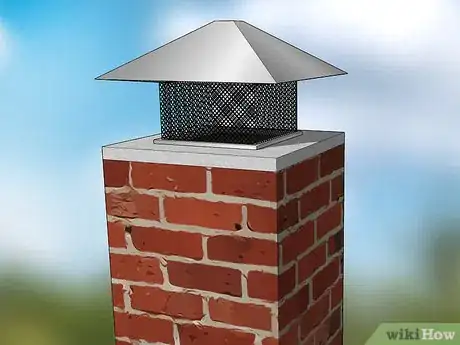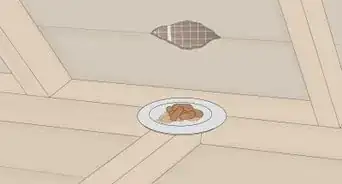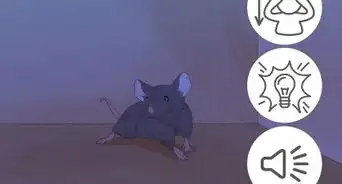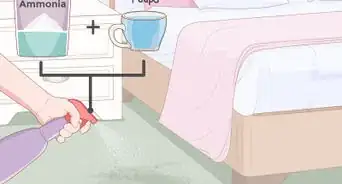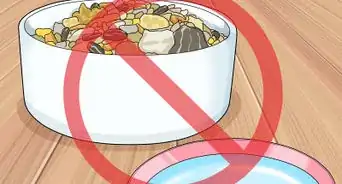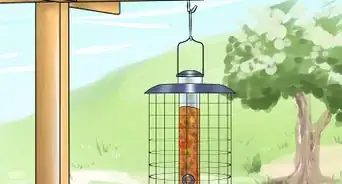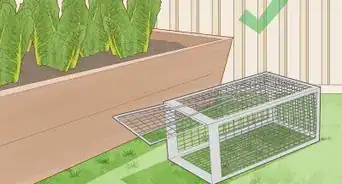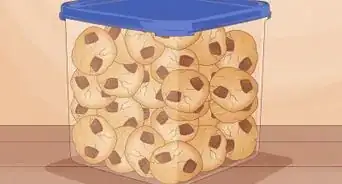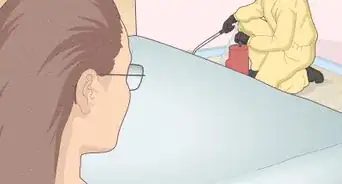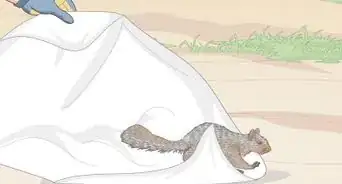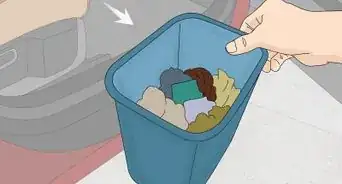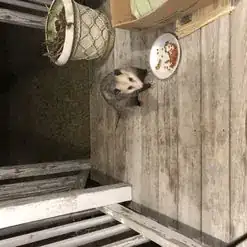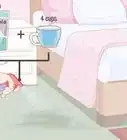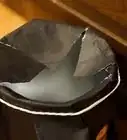This article was co-authored by Kevin Carrillo. Kevin Carrillo is a Pest Control Specialist and the Senior Project Manager for MMPC, a pest control service and certified Minority-owned Business Enterprise (MBE) based in the New York City area. MMPC is certified by the industry’s leading codes and practices, including the National Pest Management Association (NPMA), QualityPro, GreenPro, and The New York Pest Management Association (NYPMA). MMPC's work has been featured in CNN, NPR, and ABC News.
There are 9 references cited in this article, which can be found at the bottom of the page.
wikiHow marks an article as reader-approved once it receives enough positive feedback. This article received 33 testimonials and 86% of readers who voted found it helpful, earning it our reader-approved status.
This article has been viewed 1,143,486 times.
Possums are usually non-aggressive animals, but they can create unsanitary conditions and may turn aggressive if they become diseased. There are several ways to get rid of them if they are hanging out in your yard. Most solutions simply involve making the environment less appealing. However, you can also set traps to capture possums and physically remove them if other simple solutions don't work.
Steps
Scaring Possums Away
-
1Set up motion-activated lights or sprinklers. Place a motion-activated device near the perimeter of your house, at the front of your property, around fruit trees, or on any other spots where possums frequent. Once the device is triggered on the animal several times, it won't want to come around again.[1]
- Motion-activated devices are triggered once the possum crosses the sensor but they are also triggered by anything else that crosses the sensor.
- Motion-activated sprinklers tend to be slightly more effective than motion-activated lights. Lights are enough to frighten away skittish possums that are afraid of humans, but water sprinklers work better with possums that are a little more mature and a little harder to startle.
-
2Scatter dog or cat fur in the areas that possums frequent. Collect pet hair after brushing your dog or cat. Place the hair in small mesh bags and hang them or scatter them around areas at which possums frequently gather.
- The smell of a potential predator might be enough to deter many possums from hanging around.
Note: Do not let your dog or cat roam free through the yard for the purpose of scaring away possums. They could get into a fight with aggressive possums or other dangerous animals.
Advertisement -
3Spread something that smells potent. Ammonia and garlic are scents that possums tend to flee from. If using ammonia, pour a small amount of ammonia into a coffee can with a lid. Place a rag inside the ammonia and bring one end up through a hole cut into the lid. The rag will act as a wick to disperse the fumes. Place one of these containers in every area where possums gather.[2]
- Place a clove of crushed garlic in any area that you want neighborhood possums to avoid. Crushed garlic is better than whole garlic since crushing it first allows more of the scent to escape.[3]
-
4Apply a chemical repellent. Chemical repellents can be applied to gardens, flowerbeds, or the base of a structure. Purchase a product from your local home improvement or hardware store. Follow the instructions on the repellent to apply it safely. Most repellents consist of a powder that is sprinkled over the desired area.[4]
- Different repellents use different ingredients, but predator urine is often one element of it.
Removing Access to Food
-
1Do not intentionally provide food for the possums. Possums are attracted to yards and homes where food is plentiful, so feeding them your scraps will keep them around. By removing food sources, you will make your property dramatically less appealing.[5]
- You may think that you are doing a good deed, but possums fed by humans gradually lose their fear of humans and are more likely to become aggressive when food is not given to them.
EXPERT TIPKevin Carrillo is a Pest Control Specialist and the Senior Project Manager for MMPC, a pest control service and certified Minority-owned Business Enterprise (MBE) based in the New York City area. MMPC is certified by the industry’s leading codes and practices, including the National Pest Management Association (NPMA), QualityPro, GreenPro, and The New York Pest Management Association (NYPMA). MMPC's work has been featured in CNN, NPR, and ABC News.MMPC, Pest Control Specialist
 Kevin Carrillo
Kevin Carrillo
MMPC, Pest Control SpecialistOur Expert Agrees: Most pests are looking for a safe place to eat that also has an abundant food source. If you're leaving food out for other animals like stray cats, it's more likely that possums are eating the food. Eliminate the food sources to remove your possum problem.
-
2Prevent possums from getting into your trash. Keep the lid of your garbage cans closed by securing it with bungee cords, chains, ropes, or weights. You could also buy garbage cans with lids that have clamps to keep them on.[6]
- Securing side handles to stakes driven into the ground will prevent the trash bins from tipping over.
-
3Feed your pets indoors. Even if your pets eat their food rapidly, the smell of the food residue may lure possums to your yard. If feeding inside is not possible, feed your pets outdoors in the late morning or middle of the afternoon, so that the food is not around in the early morning or late at night, which is when possums are most active.[7]
- Remove all sources of food and water before dusk settles in, and keep pet food away from pet doors or other openings to the house.
This includes feeding animals you keep outside, such as chickens. Possums are often attracted to chicken feed and they can kill your chickens if they go into a coop, so feed your chickens midday if possible.
-
4Remove or secure any other sources of food. There are a wide variety of sources of food for possums. For example, do not use open compost piles and keep compost in secure containers, covered compost structures, or covered worm boxes. Other sources that need to be dealt with include:[8]
- Barbecue grills: Clean grills and grease traps after you use them.
- Fruit: Pick up fruit that drops from trees or bushes.
- Birdseed: If you do provide birdseed, try to lay some out in the late morning or mid-afternoon and only spread enough to feed the birds for that single day. Alternatively, fill bird feeders with seed and hang them high up in the air.
Trapping and Removing Possums
-
1Get a live-holding cage trap. If you have possums in your crawlspaces, such as your roof or under your house, you may need to physically remove them. Get a live-holding trap from a big-box home improvement store or from an online retailer. Live-holding traps capture possums without hurting or killing them. They are preferable to quick-kill traps.[9]
- Note that in many states and municipalities, using quick-kill traps to dispose of possums may be restricted or prohibited. Live-holding traps are rarely banned, however.
- Find out from your municipality if there are any restrictions on trapping. Some cities may require you to obtain a permit. Others may have specific demands about where to release the animal and who can do so.
-
2Set up the trap in the possum's path. Follow the manufacturer's instructions to bait and set the trap. Setting it near the suspected den is ideal, but any area that frequently suffers damage due to a possum is an acceptable location to choose.[10]
- Set the trap on soft ground or place it on plywood if setting it on a hard surface. The trapped possum may attempt to dig its way out, and placing the trap on a protective surface will prevent it from damaging its paws.
- Set the trap at dusk to increase your odds of catching a possum, which is a nocturnal animal. Close an empty trap at dawn to prevent the accidental trapping of a diurnal animal.
- Each cage trap is set in a slightly different manner, but most have a trigger rod or knob that must be pulled or twisted out when opening the door of the cage. When the animal steps inside, it triggers this rod and snaps the door closed. Follow the specific manufacturer's instructions that come with your cage trap for more specific directions.
- Use appropriate bait. Fruit, berries, vegetables, raw egg, peanut butter, and sardines are attractive bait options for possums.
-
3Monitor the trap. Watch the trap continually so that you will know as soon as possible if a possum gets trapped in it. Once the possum is captured, move the trap to a quiet spot and cover it with a tarp until you are ready to release it.[11]
- Use thick gloves or a long pole to prevent yourself from getting scratched through the cage.
-
4Release the animal from the trap. Exercise caution when releasing the animal or call a wildlife professional. When releasing the animal, point the opening in the direction you want the animal to run off in. Stand at the opposite end of the door and tap the trap with your foot or a long pole until the animal runs out.
- Exercise extreme caution when releasing a trapped animal. When trapped, animals often lash out in fear, and you may be scratched or bitten if you are not careful.[12]
- Know your local laws concerning releasing possums and other trapped animals. Some areas may have few, if any, restrictions, in which case, you should drive the possum several miles away from your property before releasing it into a wooded area. Other areas may require that you release the possum on your property or hire a professional to release the possum.[13]
If you suspect that the possum may bite you, attach a rope to the door before setting it so that you can open it from a distance.
Keeping Possums Out
-
1Cover your foundation vents. One of the easiest ways for possums to sneak into your home is through the dryer vent or other vents along the foundation. Block possums from sneaking in through these openings by covering them with slotted metal vent covers. [14]
- These covers are screwed onto the vent and have just enough room for steam and smoke to escape but not enough for possums to sneak through.
-
2Trim tree branches. Possums can sneak onto your roof if tree branches or other tall plants are positioned nearby. Tree branches should be trimmed a minimum of 5 feet (1.5 m) away from the roof.[15]
- Do not place climbing plants near or on the house, especially not near the eaves areas.
-
3Protect the underside of low decks. Possums often hide out under low decks, so these should also be protected with some form of metal barrier. Use 1⁄4 inch (6.4 mm) grid screening or solid metal flashing all around the base to build a barrier:
- Dig a trench around the perimeter of the deck. The hole should be at least 12 inches (30.5 cm) deep. Place the screening or flashing in the trench. The barrier should extend from the bottom of the hole to the bottom or underside of the deck.
- Fill the trench in with dirt, packing it down in place to prevent the screening from being jolted or wiggled around.
- Attach the top of the screening to the deck. Nails or fence post staples usually work best.
-
4Create a temporary one-way exit for any trapped possums. If you suspect that possums might be trapped below your deck, provide them with a temporary means of escape. Instead of sealing up the final section of screening, use 1⁄4 inch (6.4 mm) grid screening to form door or a funnel that the possum can get out of but can't get back in through.
- To use a one-way exit funnel, the large end should be big enough for a possum to fit through and should be attached to the barrier using nails or fence post staples. The small end should extend away from the building and should have a hole roughly 4 to 6 inches (10 to 15 cm) in diameter. This will allow possums to squeeze their way out but not squeeze their way in.
- Keep this passage open for a few days to one week before sealing up the hole.
-
5Seal any other open spaces. Your home may have other open spaces that will appear inviting to a possum looking for a warm home or a free meal. Attic vents and chimneys should be covered with 1/4-inch (6.35-mm) grid screening. You could also use insect screening over the vents or you should have a chimney cap installed.[16]
- Repair any holes in deck lattices, window screens, or door screens.
- Lock or cover pet doors at night.
If you live in a mobile home, cover the open space below the home with wire cloth. Make sure that the barrier extends from the ground all the way up to the bottom of the trailer. Cement block and wood lattice can also be used.
Expert Q&A
Did you know you can get expert answers for this article?
Unlock expert answers by supporting wikiHow
-
QuestionHow do you keep possums away?
 Kevin CarrilloKevin Carrillo is a Pest Control Specialist and the Senior Project Manager for MMPC, a pest control service and certified Minority-owned Business Enterprise (MBE) based in the New York City area. MMPC is certified by the industry’s leading codes and practices, including the National Pest Management Association (NPMA), QualityPro, GreenPro, and The New York Pest Management Association (NYPMA). MMPC's work has been featured in CNN, NPR, and ABC News.
Kevin CarrilloKevin Carrillo is a Pest Control Specialist and the Senior Project Manager for MMPC, a pest control service and certified Minority-owned Business Enterprise (MBE) based in the New York City area. MMPC is certified by the industry’s leading codes and practices, including the National Pest Management Association (NPMA), QualityPro, GreenPro, and The New York Pest Management Association (NYPMA). MMPC's work has been featured in CNN, NPR, and ABC News.
MMPC, Pest Control Specialist
Things You'll Need
Scaring Possums Away
- Motion-activated lights or sprinklers
- Dog or cat fur
- Ammonia or garlic
- Chemical repellents
Making the Area Less Inviting
- Secure compost containers
Trapping and Removing Possums
- Live-holding cage trap
- Food bait, such as fruit, berries, vegetables, raw egg, peanut butter, or sardines
Keeping Possums Out
- Metal vent covers
- Chimney cap
- Grid screening
- Nails or fencing staples
- Tree trimming tools
References
- ↑ https://www.gardeningknowhow.com/plant-problems/pests/animals/possum-control.htm
- ↑ https://www.opossum.org/discourage.html
- ↑ https://www.wildlife.vic.gov.au/__data/assets/pdf_file/0027/92475/Possum-Repellents-Fact-Sheet.pdf
- ↑ https://www.wildlife.vic.gov.au/__data/assets/pdf_file/0027/92475/Possum-Repellents-Fact-Sheet.pdf
- ↑ https://wdfw.wa.gov/living/opossums.html
- ↑ http://wdfw.wa.gov/living/opossums.html#conflicts
- ↑ https://wdfw.wa.gov/living/opossums.html
- ↑ https://wdfw.wa.gov/living/opossums.html
- ↑ https://wdfw.wa.gov/species-habitats/living/nuisance-wildlife/trapping
- ↑ https://wdfw.wa.gov/living/opossums.html
- ↑ https://wdfw.wa.gov/living/opossums.html
- ↑ http://www.wlf.louisiana.gov/wildlife/nuisance-wildlife
- ↑ https://wdfw.wa.gov/living/opossums.html
- ↑ http://www.sbcounty.gov/acc/content/programs/educational/encountering_wildlife.pdf
- ↑ http://ipm.ucanr.edu/PMG/PESTNOTES/pn74123.html
- ↑ https://wdfw.wa.gov/living/opossums.html
About This Article
To get rid of possums, eliminate food sources by keeping your garbage contained, feeding your pets inside, and picking up any fruit that drops from trees or bushes. Additionally, keep your grass mowed and the area around your house free of piles of wood, grass clippings, or other debris, which can provide cover for possums. You can scatter dog or cat fur around your property, since the smell of a potential predator can deter possums. Alternatively, try spreading ammonia, mothballs, or garlic around your house, as these are all smells possums dislike. To learn how to set a live-holding cage trap to get rid of possums, scroll down!
